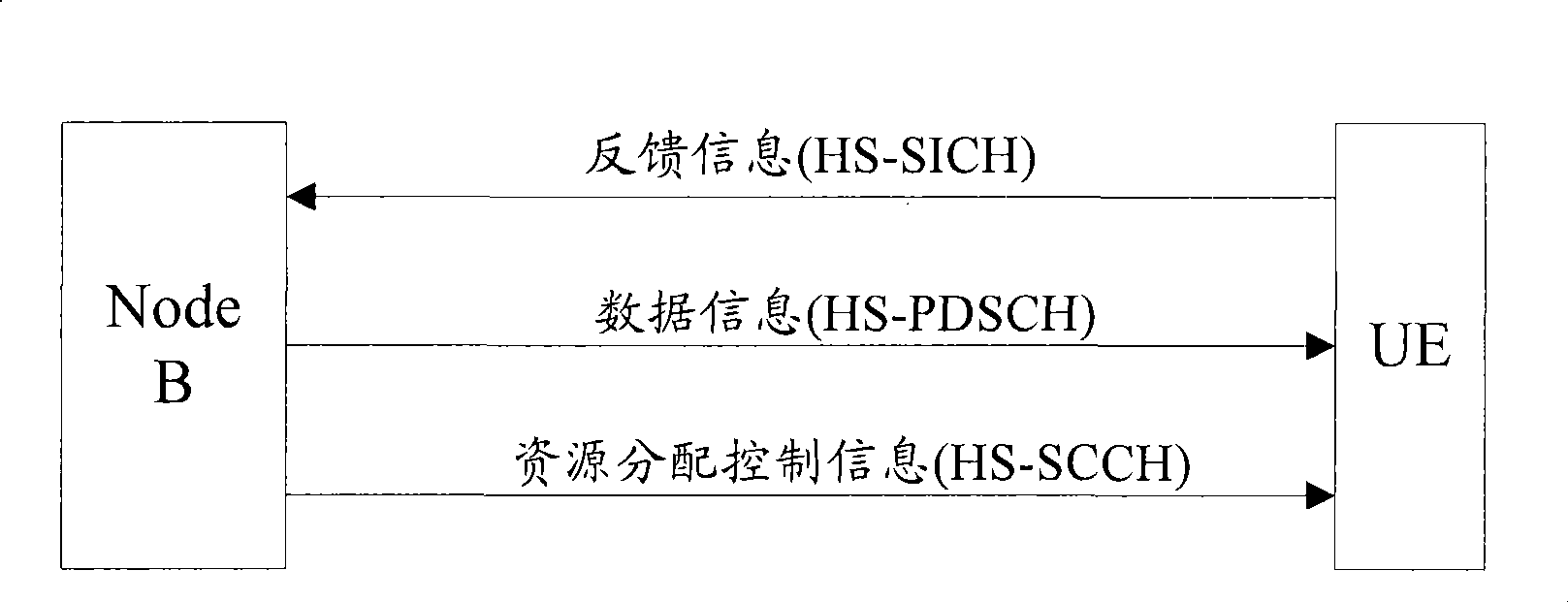Control method for entering into/withdraw from discontinuous receiving state by user equipment
A technology of user equipment and control method, applied in the field of wireless communication, can solve the problems of not knowing whether the receiving side is receiving correctly, no interaction process, inconsistency, etc., to achieve the effect of improving reliability and ensuring the data transmission process
- Summary
- Abstract
- Description
- Claims
- Application Information
AI Technical Summary
Problems solved by technology
Method used
Image
Examples
Embodiment 1
[0045] Embodiment 1: The feedback information control channel is H-SICH
[0046] In the HSDPA technology of the TD-SCDMA system, the Node B on the network side uses a dynamic scheduling method to allocate the HS-PDSCH radio channel and other related resources to the UE. Among them, the Node B sends related control information through the resource allocation control channel (HS-SCCH). The information is sent to the UE, and the UE feeds back the HS-PDSCH channel reception information to the Node B through the information feedback control channel (HS-SICH).
[0047] In related technologies, in order for the Node B to initiate HSDPA transmission at any time, the UE needs to continuously monitor the HS-SCCH channel. In order to reduce UE power consumption when there is no HSDPA transmission for a long time, the Node B can order the UE to enter the HS-SCCH DRX state, and at the same time, the Node B enters the HS-SCCH DTX state for the UE. After the Node B and the UE enter the HS-S...
Embodiment 2
[0063] Embodiment 2: The feedback information control channel is a non-scheduled E-PUCH
[0064] Compared with Embodiment 1, in this embodiment, the information feedback control channel is a non-scheduled E-PUCH channel in the HSUPA (that is, E-DCH) technology. In this application scenario, according to the embodiment of the present invention, the control method for the user equipment to enter / exit the DRX state specifically includes the following processing:
[0065] 1. The network side initially allocates HS-SCCH channel and non-scheduled E-PUCH channel resources for UE as resource allocation control channel and information feedback control channel, configures the cycle of DTX and DRX of HS-SCCH channel, and sends them through high-layer signaling to UE (801). The resource allocation process is similar to Embodiment 1, and is the same as the current HSDPA and HSUPA technologies, so no detailed description is given here.
[0066] 2. When performing HSDPA transmission contro...
PUM
 Login to View More
Login to View More Abstract
Description
Claims
Application Information
 Login to View More
Login to View More - R&D
- Intellectual Property
- Life Sciences
- Materials
- Tech Scout
- Unparalleled Data Quality
- Higher Quality Content
- 60% Fewer Hallucinations
Browse by: Latest US Patents, China's latest patents, Technical Efficacy Thesaurus, Application Domain, Technology Topic, Popular Technical Reports.
© 2025 PatSnap. All rights reserved.Legal|Privacy policy|Modern Slavery Act Transparency Statement|Sitemap|About US| Contact US: help@patsnap.com



